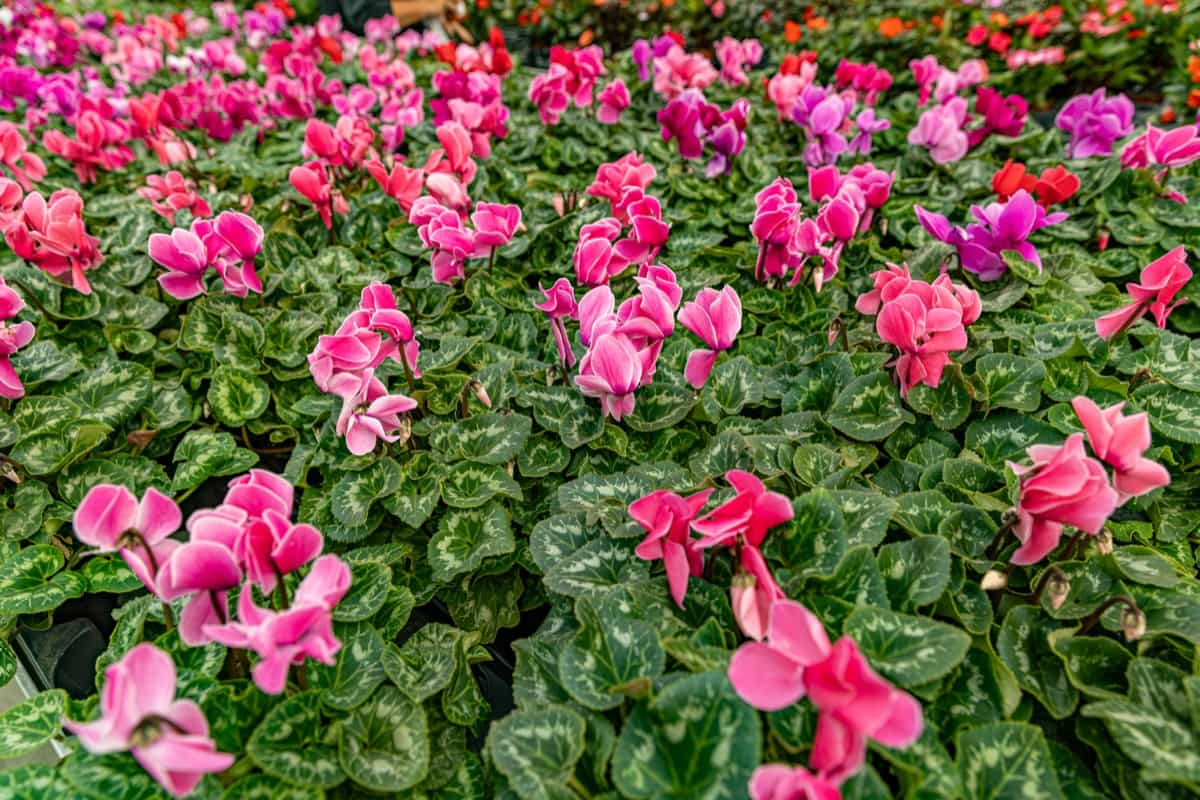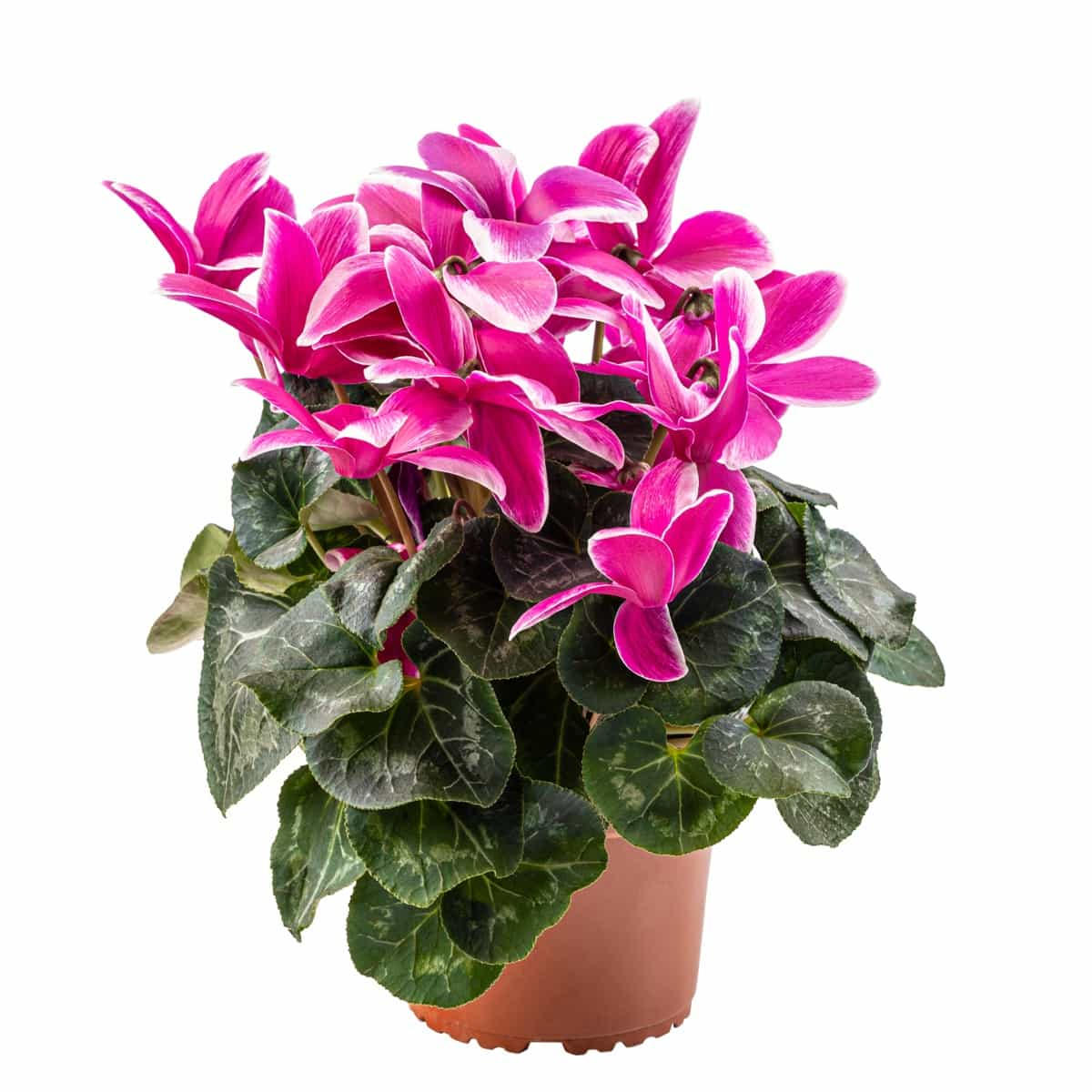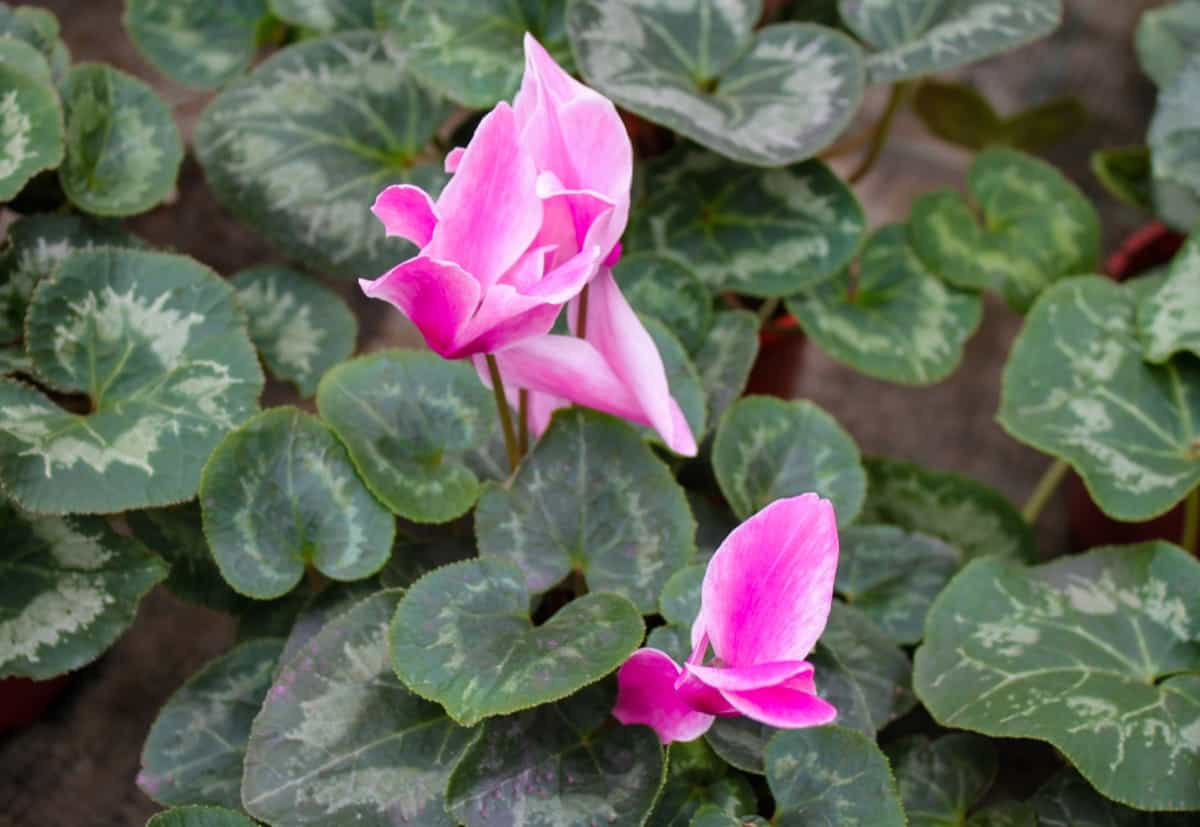Cyclamen plants are prized for their spectacular bloom and beautiful foliage, making them an excellent choice for indoor gardening enthusiasts. However, like all plants, they may fall victim to several issues that result in yellowing leaves. Though seeing your cyclamen plant struggling may be disheartening, there’s no need for panic.

It’s crucial to remember that plants, like us, show symptoms when they’re under stress, and yellow leaves are usually a cry for help. Let’s explore the ten reasons cyclamen plant leaves turn yellow and explore effective treatments and solutions.
10 Reasons for Cyclamen Plant Yellow Leaves
Inadequate Watering
First on the list is inadequate watering, one of the most common causes of yellowing leaves in cyclamen plants. Too little or too much water can lead to stress, resulting in yellow leaves. Underwatered plants may wilt and show signs of yellowing because they can’t get enough moisture to support healthy leaf development.
Over-watering, on the other hand, can cause root rot, which also leads to yellow leaves. To solve this, it’s best to establish a regular watering schedule and ensure the plant’s soil is well-draining to prevent water from accumulating at the roots.
Poor Lighting
Next up is poor lighting. Cyclamen plants prefer bright, indirect light, which is essential for photosynthesis. However, they may suffer from “indoor cyclamen problems” when exposed to inadequate or excessive light, leading to yellow leaves. If the plant doesn’t get enough light, it can’t produce the nutrients for healthy growth, causing the leaves to turn yellow. On the other hand, too much direct sunlight can burn the leaves, leading to a similar result. The solution to this issue involves finding a location in your home with plenty of indirect sunlight.
Incorrect Temperature
The third reason for cyclamen yellow leaves is incorrect temperature. Cyclamens prefer cooler temperatures, which can be tricky to provide indoors, especially during the winter. When the temperature is too high, the plant can experience stress, leading to yellow leaves. To avoid this “cyclamen yellow leaves winter” issue, keep your cyclamen in a room where the temperature is cool, ideally between 60 and 65 degrees Fahrenheit.
Lack of Nutrients
Lack of nutrients is another common reason for yellowing leaves in cyclamen plants. They need a balanced supply of nutrients to sustain healthy growth, and a deficiency in any of these vital nutrients can lead to yellow leaves. Over time, the nutrients in potting soil get depleted, and if they’re not replenished, the plant’s health may deteriorate. To address the problem, use a balanced, slow-release fertilizer every few months to ensure your plant receives the necessary nutrients.
Disease and Pests
Fifth on our list is disease and pests, a common problem that can lead to yellow leaves. Cyclamen plants can be affected by various diseases, such as fungal infections and pests like aphids or spider mites. These can all cause the leaves to turn yellow as the plant struggles to fight off the invasion. Non-toxic pest control methods and antifungal treatments can help restore your cyclamen to good health.
In case you missed it: 10 Common Problems With Coneflower Plants: Treatment, Solutions, and Troubleshooting

Poor Air Circulation
Poor air circulation is often overlooked but is an important aspect of plant health. Lack of air movement can result in damp conditions, making your plant susceptible to diseases, leading to yellowing leaves. Therefore, placing your cyclamen in a location with good air circulation is important.
Wrong Pot Size
The seventh reason for cyclamen leaves turning yellow is the wrong pot size. A pot that’s too small can lead to root-bound conditions, where the plant’s roots run out of space to grow. This can cause stress, leading to yellow leaves. Conversely, a pot that’s too large can hold excess moisture, leading to root rot and yellowing leaves. Choose a pot that’s just large enough for your cyclamen’s root system for optimal growth.
Natural Dormancy Period
At the eighth spot is the cyclamen’s natural dormancy period, which may cause leaves to turn yellow and drop. Cyclamens naturally enter a dormant phase, usually around the end of spring or the start of summer. Yellowing leaves are a normal part of the plant’s life cycle during this period. The solution here is understanding and respecting the plant’s natural rhythm. The common question is, “What month do cyclamen go dormant?” Typically, they go dormant in late spring or early summer, but this may vary depending on the specific conditions in your home.
Age of the Leaves
Another cause of yellow leaves is the age of the leaves themselves. Over time, older leaves naturally age and turn yellow before falling off. This is a natural part of a cyclamen’s lifecycle and is not necessarily a sign of a problem. If the yellowing leaves are older and are on the outside of the plant, this is likely the cause. As part of your plant care routine, you might wonder, “Should I remove yellow leaves from cyclamen?” Removing these leaves can assist the plant in directing its energy towards fresh growth if the reason is natural aging.
Improper Humidity
Last but not least, improper humidity can also cause yellowing leaves. Cyclamen plants prefer a humid environment, and when the air is too dry, it can lead to leaf yellowing and browning. In indoor environments, especially in winter, air can dry due to heating systems. To ensure your cyclamen gets the humidity it needs, place it on a tray of water with pebbles to increase the surrounding humidity.
In case you missed it: Benefits of Wood Ash for Your Garden Plants: How to Apply and When to Use Wood Ash as Fertilizer

Conclusion
To sum up, cyclamen plants are susceptible to various factors leading to yellow leaves, including inadequate watering, poor lighting, incorrect temperature, lack of nutrients, disease, and pests, poor air circulation, wrong pot size, natural dormancy period, the age of leaves, and improper humidity. However, with the right knowledge and care, these issues can be addressed promptly, helping your cyclamen plant thrive.
Noticing problems early, such as cyclamen drooping yellow leaves or cyclamen flowers drooping, and implementing suitable solutions, is key to maintaining a healthy, blooming cyclamen plant. Even if you encounter these problems, remember that cyclamen plants are resilient, and with the correct care, they can recover and beautify your indoor garden.
- Ultimate Guide to Ossabaw Island Hog: Breeding, Raising, Diet, and Care
- Ultimate Guide to Juliana Pig: Raising Facts, Size, Diet, Care, and Lifespan
- Raising Lleyn Sheep: Disadvantages, Price, Uses, Characteristics, and Care
- Ultimate Guide to Meishan Pig: Breed Facts, Breeding, Raising, and Care
- Ultimate Guide to Teacup Pigs: Raising, Diet, Lifespan, Cost, and Care
- Guide to Raising Poll Dorset Sheep: Facts, Profile, Characteristics, Uses, and Care
- Ultimate Guide to Bighorn Sheep: Characteristics, Diet, Lifespan, Breeding, and Lifecycle
- Ultimate Guide to Raising Katahdin Sheep: Farming Facts, Breed Profile, Uses, and Care
- Ultimate Guide to Raising Oreo Cows: Belted Galloways Farming Facts, Profile, Uses, and Care